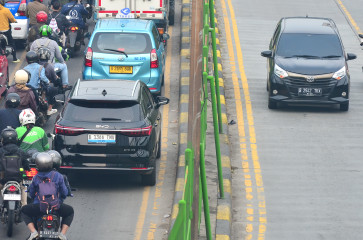Popular Reads
Top Results
Can't find what you're looking for?
View all search resultsPopular Reads
Top Results
Can't find what you're looking for?
View all search resultsOf `ogoh-ogoh' and silence: Balinese gear up for New Year
Thousands of people across Bali have been busy making the giant ogoh-ogoh effigies in preparation for the celebrations of the upcoming Caka Hindu New Year 1932, popularly known as Nyepi, or the Day of Silence
Change text size
Gift Premium Articles
to Anyone
T
housands of people across Bali have been busy making the giant ogoh-ogoh effigies in preparation for the celebrations of the upcoming Caka Hindu New Year 1932, popularly known as Nyepi, or the Day of Silence.
The event falls on March 16.
Wayan Wahyu Semadi, from Banjar Lantang village in Denpasar, built his ogoh-ogoh with the help of five neighbors.
"We're now finishing the head of the effigy," he said, adding the torso had been completed earlier.
Every banjar, or traditional village community, must prepare at least one ogoh-ogoh for each Nyepi.
The ogoh-ogoh are giant papier-m*ch* demons that symbolize all things bad.
On the eve of the Caka New Year, Balinese Hindus parade them along the streets and burn them together to dissipate any negative energy.
The effigies usually take the form of wild beasts, usually the mythical butha kala, but in recent times have been made in the form of popular cartoon characters.
Also in the past few years, effigies have been made resembling notorious public figures, including graft suspects and terrorists.
The Caka New Year is observed in total quiet and contemplation. The entire island falls into darkness on the night, as the Hindu faithful are prohibited from lighting a fire or using electricity, or even leaving home.
Virtually all activities will come to a halt for 24 hours, including tourism offices and the airport, while the streets will be deserted.
Local resident Wayan Chandra said making the ogoh-ogoh helps strengthen communal relation among neighbors.
"It's a collective work by all villagers," he said.
Each member chips in to buy the necessary materials.
"A big ogoh-ogoh can cost millions of rupiah," Chandra said.
This year, Denpasar will host an ogoh-ogoh competition.
Municipal spokesman I Made Erwin Suryadarma said the administration had given Rp 3.5 million to each of the city's 350 youth groups to make ogoh-ogoh.
Community elder I Made Karim called on all residents to make creative ogoh-ogoh.










